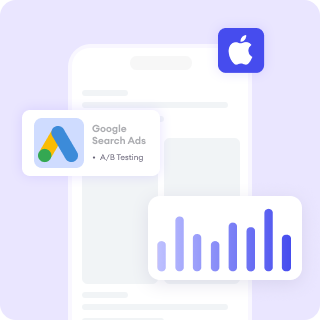Google’s core updates can be stressful, especially when reshuffling rankings happen and website owners wondering which parts of their site are affected. Not to mention if it happened very often. But there’s no need to guess. With a strategic approach and the right tools, you can identify the pages or sections of your website that experienced changes.
Here’s how to identify which pages or sections of your websites got affected during a Google Core Update.
1. Start with Your Analytics Tools
Your first step is to dive into Google Analytics and Google Search Console. These platforms are the primary platforms that can help you spot patterns and pinpoint changes. You should focus on:
- Traffic Fluctuations: Identify which pages saw notable increases or decreases in traffic.
- Click-Through Rates (CTR): Examine changes in CTR to see if users are engaging with your pages differently.
- Search Impressions: Look for shifts in how often your pages appear in search results.
2. Compare Performance Over Time
Compare metrics from before and after the core update. Use a baseline period (e.g., the same time frame a month earlier) to identify anomalies. Ask yourself:
- Which pages gained or lost traffic?
- Are specific sections of your site (e.g., blog posts, product pages) more affected than others?
3. Identify Keyword Movement
Tools like SEMrush, Ahrefs, or Google Search Console’s Performance report can show you how your keywords are performing. Check:
- Rankings: Which keywords moved up or down in position?
- Target Pages: Which pages are ranking for these keywords, and did they lose or gain ground?
This step helps you understand if certain topics or themes on your site are being rewarded or devalued.
4. Segment Your Pages
Group your pages by type, content category, or purpose. For example:
- Blog posts
- Product or service pages
- Landing pages
By segmenting, you can spot trends. For instance, if all your blog posts saw a drop, it might indicate a content-related issue. If only certain product pages were affected, the problem could be specific to those pages’ optimization.
5. Analyze User Behavior Metrics
Core updates often tie closely to user experience. Look at metrics such as:
- Bounce Rate: Are users leaving certain pages faster than before?
- Time on Page: Did engagement time drop or increase?
- Pages Per Session: Are users exploring more or fewer pages during their visits?
User behavior can reveal whether your content is meeting their expectations or if changes are needed.
6. Check for Content Quality Issues
If specific pages have lost traction, revisit them with a critical eye:
- Relevance: Does the content address user intent?
- Depth: Is it comprehensive and well-researched?
- Clarity: Is the information presented in an easy-to-read format?
- Recency: Is it outdated compared to competitors’ pages?
Google’s core updates often reward content that is fresh, accurate, and engaging.
In case you see a drop in performance after the core update, you should refresh the content by rewriting it instead of creating a new page.
Learn more: How To Identify If Your Website Has A Thin Content?
7. Look at Technical SEO Factors
Sometimes, changes in rankings stem from technical issues rather than content quality. For affected pages, investigate:
- Mobile-Friendliness: Are pages displaying well on mobile devices?
- Load Times: Slow pages can hurt your rankings and user experience.
- Indexing Issues: Ensure affected pages are correctly indexed and free from errors.
Learn more: How To Improve Your Mobile Website For Mobile-First Indexing
8. Benchmark Against Competitors
If competitors’ pages have overtaken yours, analyze their content, layout, and user experience. What are they doing differently and use these insights to refine your approach. Look for:
- More thorough content coverage
- Faster page speeds
- Better use of visuals or multimedia
9. Document Your Findings
Create a summary of your analysis. This documentation will guide your recovery efforts and help track progress over time. Take note of:
- Pages or sections with the most significant changes
- Potential causes for performance shifts
- Actionable steps to address identified issues
10. Adapt and Optimize
Once you’ve pinpointed the affected areas and understood why they were impacted, focus on improvement. Update content, enhance user experience, and address technical issues. Test changes and monitor their effects to ensure you’re moving in the right direction.
Conclusion
Identifying the pages or sections of your site affected by a Google Core Update doesn’t have to be an overwhelming and stressful experience for you. With a methodical approach and the right tools, you can uncover valuable insights to refine your strategy and strengthen your site.
Every update is an opportunity to grow and adapt, so make sure your content continues to meet the needs of your audience.
Improve your website performance with FoxAdvert!
If you are looking forward to how to improve your website performance, our professional team of SEO experts at FoxAdvert can help you. Contact us today to start your journey 😊











